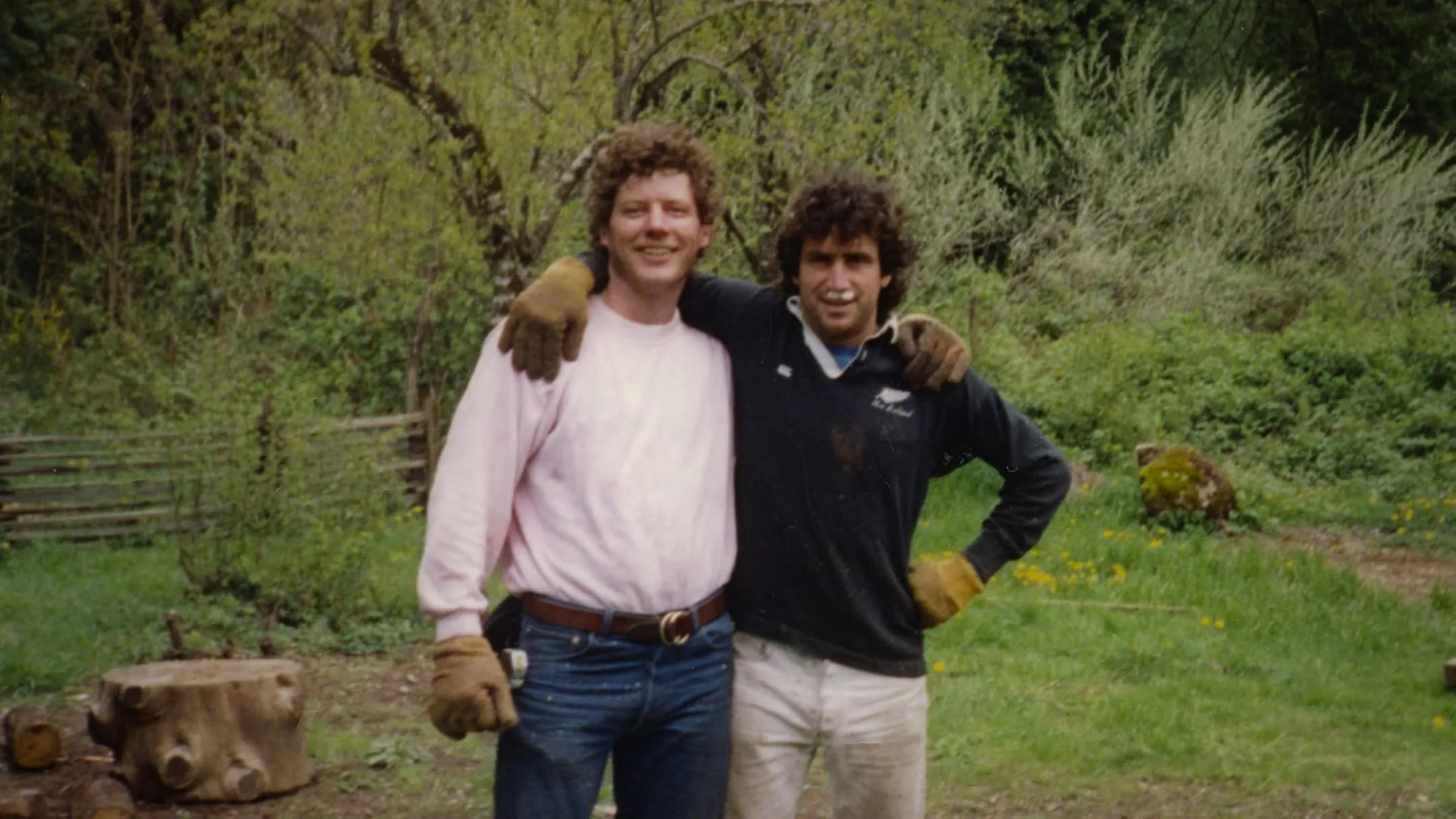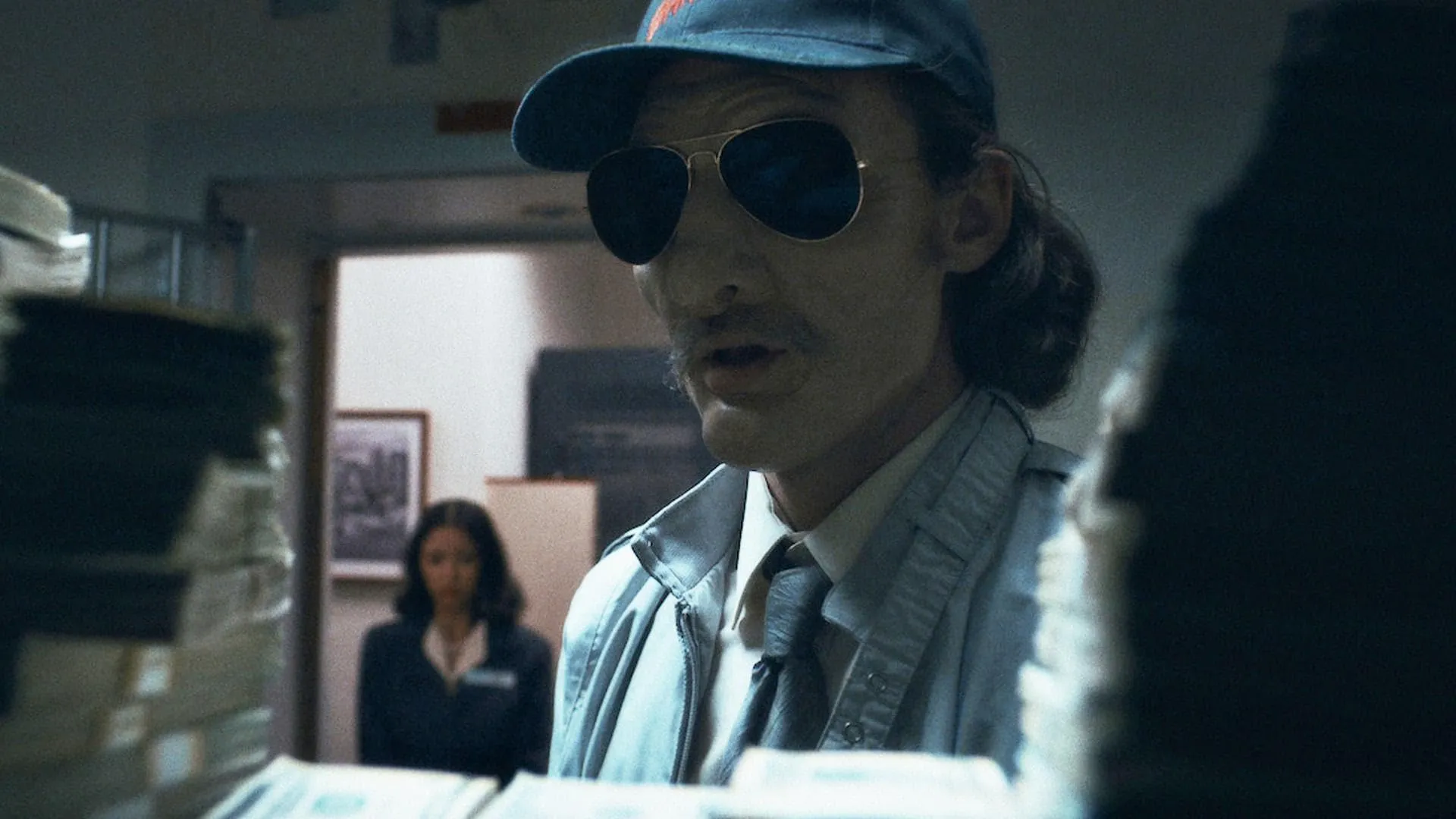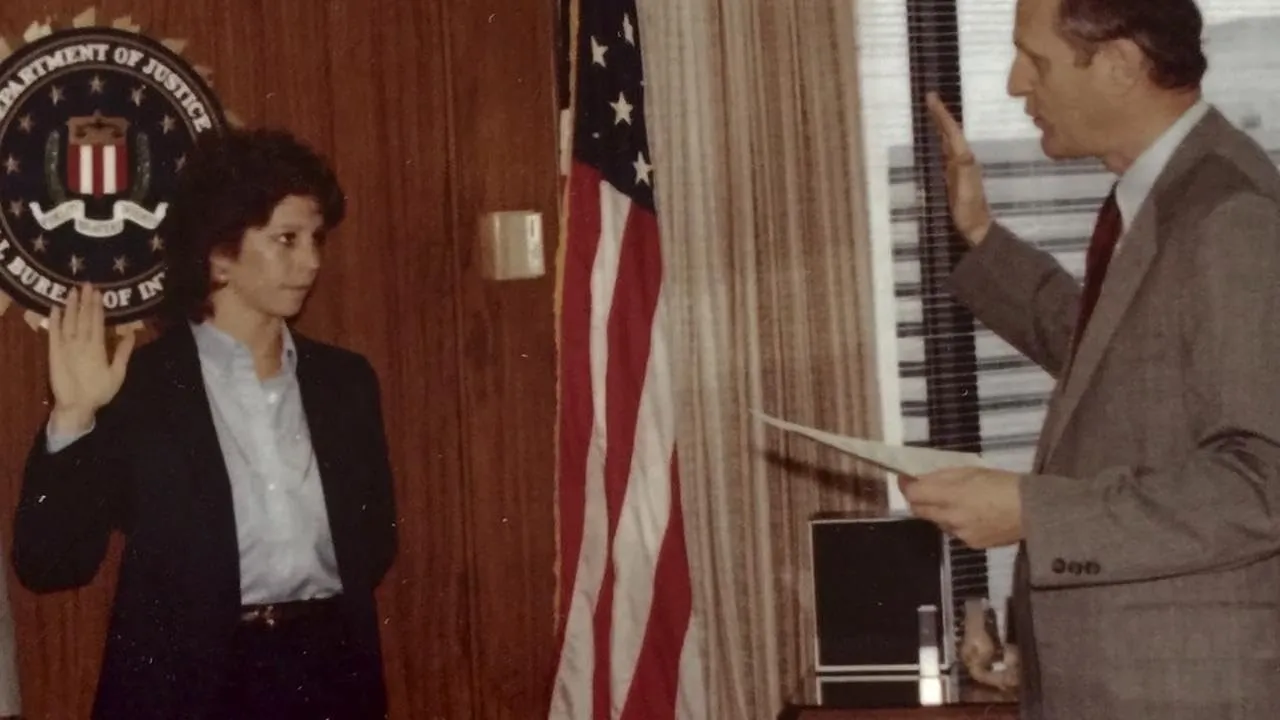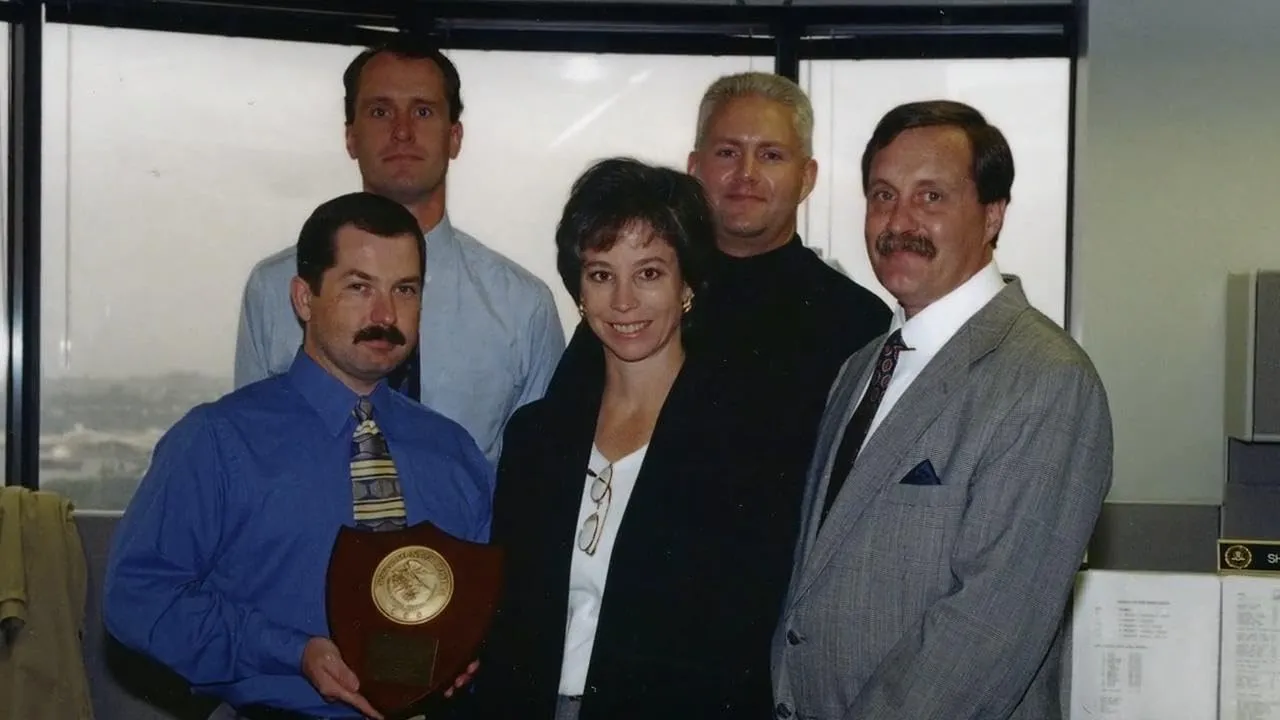Between 1992 and 1996 in Seattle, a serial bank robber shook the city to its core. Pulling off a staggering 19 heists, he entered the annals of crime as one of the most prolific bank robbers in US history. Dubbed “Hollywood” by the FBI due to his elaborate disguises, the real name of this man was Scott Scurlock. Through it all, he evaded capture, taunting the police in what seemed like a personal game of cat and mouse. His story reads like the pages of a Hollywood thriller.
Directors Stephen Robert Morse and Seth Porges delve behind the headlines in their gripping documentary “How to Rob a Bank”. Beyond the sensational details of each heist, they aim to get to the root of what drove Hollywood—to peer into the mind of this criminal mastermind and find the answers to the age-old question of why. Through interviews with those close to him, his accomplices, and the police who hunted him, as well as dramatic reenactments, a portrait emerges of a man on a complex psychological journey.
We discover how Hollywood was inspired by Patrick Swayze’s freewheeling character in Point Break, desiring the same thrill and rebellion. Once an aspiring student, he turned to crystal meth dealing after being expelled from college. When that fell through, bank robbery presented itself as another adrenaline-fueled chase. For the authorities’ part, profiling him as everything from a “preacher’s kid” craving attention to a tortured soul wrestling inner demons, each new revelation transforms our understanding.
By the film’s end, while Hollywood’s fate remains unknown, one thing is clear: beneath the daring feats and disguises lay a psyche far more troubled than any sane criminal. It’s a testimony to the documentary’s skill that while finding little to admire in the man’s crimes, in getting inside his mind we feel almost complicit in his downfall. Both a cautionary true crime tale and a case study in abnormal psychology, “How to Rob a Bank” leaves us questioning where the deeds of man end and the mysteries of what drives him begin.
The Emergence of a Bank Robber
Seattle in the 90s was a city undergoing radical change. After years as a modest port town, the area was transforming into a tech powerhouse. Companies like Microsoft and Amazon had taken off in a huge way. Money was pouring into the city. With more wealth than ever before, banks sprang up seemingly overnight to accommodate all the new funds.
Not too far from the economic boom lay The Evergreen State College, known as a haven for free spirits. It drew creative thinkers unwilling to conform to mainstream ideas. Some would see this mix of traditional success and counterculture as conflicting, but it created a uniquely balanced community.
It was against this backdrop that we meet Scott Scurlock, later dubbed “Hollywood” by the FBI. Though just shy of graduating from Evergreen with a biochemistry degree, Scott had grown restless with ordinary pursuits. He found his calling robbing these new banks in dazzling disguises, pulling off an astounding 19 heists.
Yet Scott lived far from the city in a truly remarkable way. Deep in the forest, he had constructed an immense treehouse—part home, part work of art. With no formal training, he shaped this 58-ton structure entirely by hand. Friends saw Scott abandoning himself to his adventuresome spirit as he zip lined the treetops without fear. Though his profession was illegal, his skills and talents were undeniable.
Aiding Scott in his bank jobs were accomplices Mark Biggins and Steve Meyers. Like Scott, they rejected the yuppie prosperity rising around them. Their exploits would rock Seattle to its core, playing out the ultimatum between big money and nonconformity.
The Caper Crew in Action
It all started on a whim for Scott Scurlock after viewing the surfing bank robbers in Point Break. Inspired by the carefree criminals on screen, he hatched a plot to knock over some of Seattle’s newly sprouted banks with pals Mark and Steve. Their inaugural job was far from smooth, bumbling their way in with only the clothes on their backs. But somehow they escaped with $20 grand, an inauspicious beginning to what would become a prolific crime spree.
Emoldened by success, Scurlock upped his game. He began meticulously scouting banks, analyzing patterns to find the most profitable times to strike. And with cash on the brain, Hollywood also hatched more outlandish disguises. Grotesque latex masks and wads of fake facial hair soon replaced early feeble efforts. The new-and-improved Hollywood shocked tellers as he waved arms, scooping wads of bills into bags with abandon.
With Hollywood diversifying their techniques, scores soared. Heist number four delivered a massive quarter-million jackpot. But their flair for theatrics gained unwanted attention from the Feds. Dubbing him “Hollywood” amid a media frenzy, the FBI launched a dogged manhunt. Yet no matter the heat, Scurlock upped his count, each crime more dazzling than the last. Slick getaways saw them slip through the clutches of lawmen more than once. Although chased to the ends of the earth, the fast-thinking crew constantly kept one jump ahead.
Over 14 bank jobs and four years, Scurlock totaled over two million in dirty cash. Despite aggressive FBI profiling and stakeouts, the cunning criminal evaded capture through unpredictability and panache. But with fame came pressure, and Scurlock’s carefree spirit seemingly soured. As his exploits pushed the limits of danger, even his accomplices grew afraid. Their fates would be decided in a final showdown, with police rapidly closing the door.
Inside the Mind of a Bankrobber
To understand Hollywood, one must get inside the mind of Scott Scurlock. Those closest to him offer intriguing insight into what drove this prolific criminal. While friends saw an adventurous spirit, others detected tensions simmering below.
Scurlock lived outside society’s boundaries, building an aerie far from prying eyes. There he could indulge his wild side, like ziplining without precautions. Friends saw freedom and fun, but his crimes hinted at darker undercurrents. Break-ins as a youth showed an outlaw mentality developing.
While banking millions, Scurlock left clues in diary entries of an unsettled mind. He wondered if success could fill the void within. Always seeking stimulation, he craved thrills over steady work or relationships. When the adrenaline of heists wore off, restlessness set in.
The FBI profile is telling of an antagonistic soul eager to prove himself against authority. Scurlock relished the cat-and-mouse game, taunting pursuers through brazen crimes. But arrogance became his undoing, and pressure took a toll. As his antics grew more reckless and frequent, friends saw a man losing his way.
By delving into Scurlock’s psychology, the film suggests crime satisfied transient wants yet exacerbated inner conflicts in the long run. Chasing fame and fortune, he exhausted one avenue after another. In defying society, did Scurlock also flee from himself? His downfall shows the limits when one defines life through confrontation alone.
Techniques and themes of the documentary
How to Rob a Bank keeps viewers hooked through smart techniques that bring this true story to life. Directors Morse and Porges avoid tired cliches and keep things zipping along at a rapid clip. You’re on the edge of your seat the whole time.
They also get creative with how they present key moments. I loved the comic book-style animations depicting heists and chase scenes. It’s fun to watch yet brings realism. Combined with reenactments, these sequences place us right in the action.
Even better, nobody’s voice gets lifted above others. We hear from accomplices and officials on both sides of the law. Friends provide a more humanizing perspective on Scurlock. Piecing all these views together results in a multilayered portrait of complex characters.
Most notably, Scurlock himself remains an enigma. But that’s what pulls us deeper into his psychology. Was he a cunning criminal mastermind or troubled soul seeking thrills? By the film’s end, no easy answers exist.
What stands out is how the film acknowledges real harms beyond financial losses. Staff and customers suffered trauma that lingers, a sobering reminder these “crimes” hurt real people. Scurlock’s own deteriorating mental state shows crime took a personal toll as well.
How to Rob a Bank leaves us with thought-provoking questions about motivation, not just admiration for feats of derring-do. It understands true crime storytelling at its best illuminates universal human dilemmas, not just exploits the infamous. For treating its subject with empathy, insight, and flair, this one packs a big punch.
Delving Into the Depths of a Bankrobber’s Mind
How to Rob a Bank faces a challenge in its subject: a man as elusive and mercurial as the crimes he committed. Yet through careful choice of voices and inventive storytelling, it succeeds in piercing the mystery surrounding Scott Scurlock.
Piecing together accounts from his accomplices and officials provides depth, ensuring no single view dominates. Their recollections contain inconsistencies too, fitting for a figure who remained an unexpected blend of open-hearted adventurer and calculated outlaw.
Naturally, Curlock’s absence raises unanswered questions. But in a way, it enhances our focus on understanding the motives and madness within, the driving forces behind each perilous act. We grasp him through impacts on others rather than any simplified self-portrait.
Nor does it slant toward glorifying Scurlock’s unlawful talents. Recognizing trauma experienced by victims is just one of the sobering notes struck. We watch a man pursue thrills at increasing cost to well-being, eking out excitement yet finding no solution for restlessness of the soul.
The creative storytelling keeps us rapt too, from graphic novel-esque visuals to suspenseful clicks between cat and mouse. But it’s the deeper reflections that linger, as darker themes emerge of an individual searching within a society itself undergoing vast, growing pains.
How to Rob a Bank burrows into complex issues interwoven with crime, psychology, and human nature. It offers no easy resolutions, much like the enigma at its core. In so doing, it delivers a documentary profoundly thoughtful as well as entertaining.
Compelling True Crime Doc Tells an Intriguing True Tale
How to Rob a Bank recounts Scott Scurlock’s puzzling crimes, which reads like outlandish fiction. Yet directors Morse and Porges weave a riveting real-life story through interviews and animated reconstructions.
We learn of Scurlock’s treehouse home and unconventional lifestyle, backed by friends drawn under his spell. Through pros and cons, inside sources paint him as an intelligent yet troubled figure. His seeming ease opening bank vaults left cops mystified for years.
The documentary explores what drove such audacious bank raids. Was it mere thrills or deeper turmoil below? No easy answers exist. By depicting impacts and not glorifying crime, the film balances intrigue with sobering responsibility.
Through creative storytelling, How to Rob a Bank keeps you hooked. But it offers more than mere entertainment—a thoughtful look inside the psychology of lawlessness. While leaving Scurlock an enigma, it peels layers from his unusual case to reveal complex truths of human nature.
For true crime fans, this rates among the most riveting accounts of its kind. It brings an unbelievable yet true story to life in a way that stimulates both mind and curiosity. However unbelievable Scurlock’s deeds, remember bank robbery should still only be enjoyed from the safety of your own couch!
The Review
How to Rob a Bank
How to Rob a Bank takes you on a thrill ride into the strange world of one man's criminal exploits. Through innovative storytelling, it brings an intriguing true story to life while provoking deeper thought around the psychology of lawlessness. Morse and Porges have crafted a true crime documentary that equally entertains and inspires reflection.
PROS
- Captivating true crime story packed with suspense
- Innovative visual storytelling keeps viewers engaged.
- Provides insight into the psychology of the criminal mind
- Balances entertainment with sobering responsibility
- Thought-provoking examination of motivations
CONS
- Lacks direct insight from Scurlock himself
- Only covers one criminal's story in detail.
- May glorify outlaw lifestyle for some viewers






















































Discussion about this post